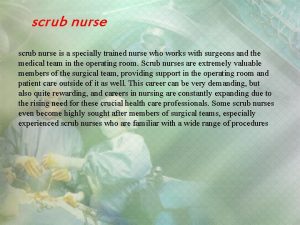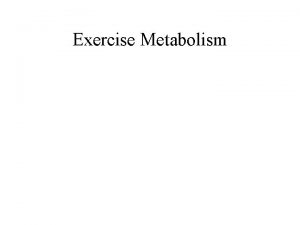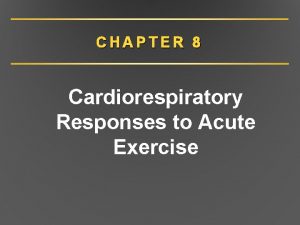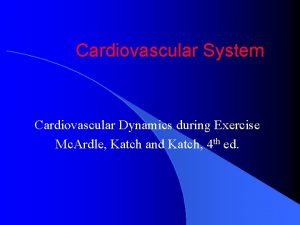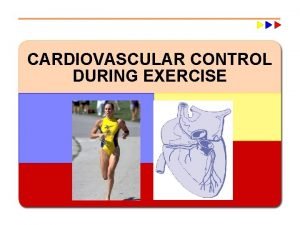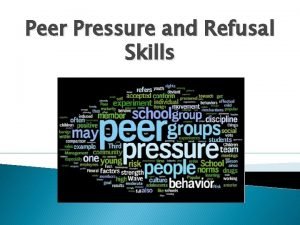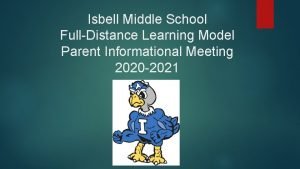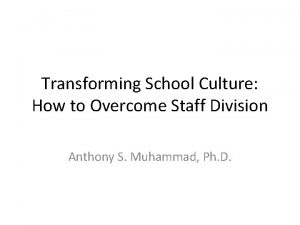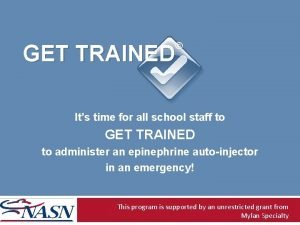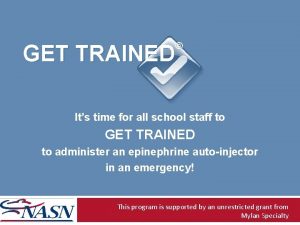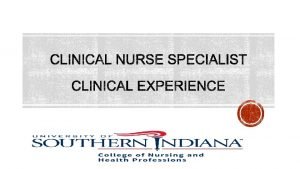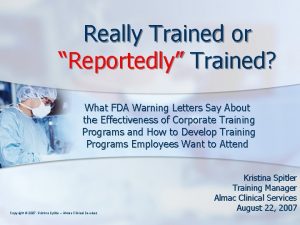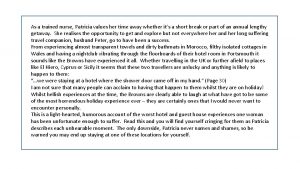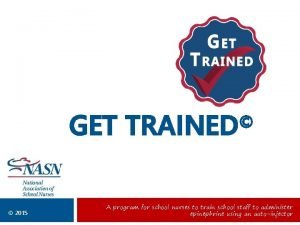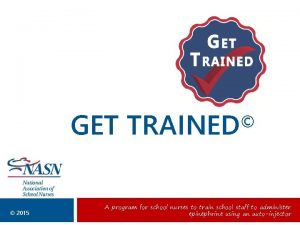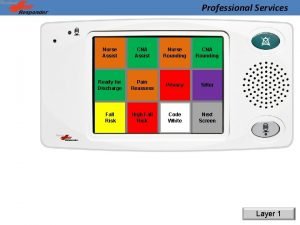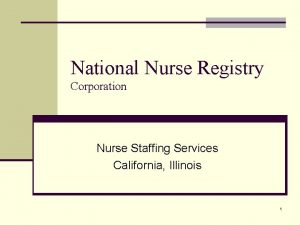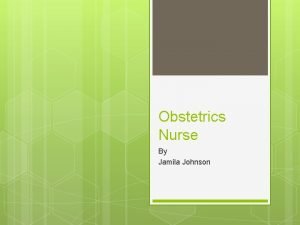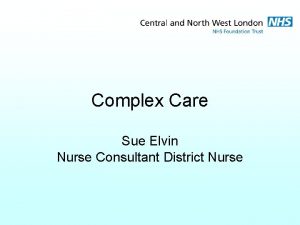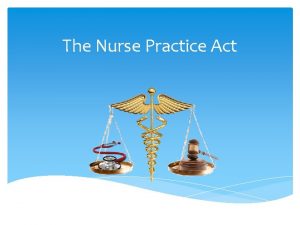GET TRAINED SCENARIOS FOR SCHOOL STAFF School Nurse









































- Slides: 41

GET TRAINED© SCENARIOS FOR SCHOOL STAFF School Nurse Recommendations for Epinephrine Administration © 2015 Get Trained© - A program for school nurses to train school staff to administer epinephrine using an auto-injector

Objective: Unlicensed school staff will demonstrate an understanding of when they should administer epinephrine to a student for an anaphylactic emergency. IMPORTANT! The program recommendations and content are based on best practices, resources, and references. Nurse practice acts differ from state to state. Each school nurse: • • must ensure before presenting the training that it is consistent with applicable state laws and regulations, including those governing delegation, as well as applicable school district policies and procedures. should review this program prior to presentation and feel comfortable with the recommendations presented here. must exercise independent professional judgment when practicing and conducting training. is responsible for the education and training that she/he presents.

Do you know when to give epinephrine? We will look at several scenarios What questions should you ask in each situation? What action should you take? Should epinephrine be given in this scenario?

Signs and Symptoms of Anaphylaxis Are any of these signs and symptoms present and severe? Or is there a COMBINATION of symptoms from different body areas? LUNG: Short of breath, wheeze, repetitive cough HEART: Pale, blue, faint, weak pulse, dizzy, confused THROAT: Tight, hoarse, trouble breathing/swallowing/phlegm mucous in throat SKIN: Hives, itchy rashes, watery eyes, swollen lips GUT/GI: Vomiting, cramping pain, diarrhea MOUTH: Obstructive swelling (tongue and/or lips) OTHER: Confusion, agitation, feeling of impending doom Eyes/Nose/Throat: Runny nose, sneezing, swollen eyes There may be one or two or a combination of symptoms

Emergency Care Plans (ECP) Well defined Step-by-step process Based on healthcare provider orders Proceeds in a logical order Provides specific directions for a particular emergency situation Written in lay, non-medical language “If you see (student name) look like this: ____, Do this immediately _________!”

Scenario #1 – Grade 3 As the art teacher, you are leading a class for 3 rd graders that is using a variety of materials. During class time, Janae comes up to you and says, “It's hard to breathe. I feel like something is REALLY wrong. ” You know that the child has a milk allergy and you realize that one of the new materials you are working with includes milk as a by-product.

Question – What do you need to know? Student Health History The school nurse had informed the staff that Janae was diagnosed with a milk allergy 6 months ago. • Janae has experienced hives in the past after consuming a small amount of milk, and an antihistamine relieved the symptoms. Her mother considered it to be minor, so Janae does not have an epinephrine auto-injector available at school. Additional information needed to make a decision Is a school nurse available? Does Janae have an Emergency Care Plan? Is there a school protocol? Is stock epinephrine available in your school?

Action – School Nurse Recommendation Contact School Nurse and/or other trained school staff. Observe Janae for signs and symptoms of anaphylaxis. Follow school/school district approved protocol. Call 911/EMS or the emergency response team. Locate and administer epinephrine auto-injector. Dose according to Emergency Care Plan. 0. 15 mg for body weight less than 55 pounds 0. 30 mg for body weight 55 pounds or more (Sicherer & Simons, 2007) Notify parent/guardian; request to come to school or meet at Emergency Room. Observe for further symptoms and until 911/EMS arrives. Be prepared to administer second dose of epinephrine within 5 to 15 minutes if symptoms continue or worsen. Record time and document event. Be prepared to perform CPR if necessary.

Recommendations for School/Nurse Follow-up The school nurse should: The art teacher should review “hidden ingredients” with the school nurse in addition to food allergy management training. meet with Janae’s parents; find out if they have a pediatric allergist; recommend that she see a pediatric allergist, if possible. write an Emergency Care Plan for Janae and share and discuss with appropriate staff. talk with Janae’s parents/guardians, obtain written permission to speak to Janae’s healthcare provider, and encourage a prescription for an epinephrine auto-injector and all necessary documentation. Review the contents of art supplies. If no school nurse is available, the school should have protocols for students with allergies that address the above. Follow up about replacement of epinephrine auto injector.

Scenario #2 – Grade 8 Max came to the office asking to speak to a counselor. He stated that he felt as if he were going to throw up with no other complaints. He said he ate 7 granola bars ‘on a dare. ’ The wrapper on the bar stated “this product may contain trace amounts of peanuts. ”

Question – What do you need to know? Additional information needed to make a decision Student Health History Max reported that he “had a reaction to peanut butter” 6 months earlier and went to the emergency room. He stated that he has not had a formal evaluation by an allergist to determine the extent of his allergies. Is a school nurse or trained staff member available who can identify signs and symptoms? Max does not have an Emergency Care Plan. What was his previous reaction to eating peanut butter? Is the granola bar wrapper available for examination?

Action – School Nurse Recommendation Contact school nurse and/or other trained school staff. Observe Max for signs and symptoms of anaphylaxis. Mild symptoms can become severe quickly. Follow school/school district approved protocol. Call 911/EMS or emergency response team. Locate and administer epinephrine auto-injector. Dose according to school/school district approved protocol. 0. 15 mg for body weight less than 55 pounds 0. 30 mg for body weight 55 pounds or more (Schoessler and White, 2013) Notify parent/guardian; request to come to school or meet at Emergency Room. Observe for further symptoms and until 911/EMS arrives. Be prepared to administer second dose of epinephrine within 5 to 15 minutes if symptoms continue or worsen. Record time and document event. Be prepared to perform CPR if necessary.

Recommendations for School/Nurse Follow-up Collaborate with school nurse; and, when it is an appropriate time, speak with Max to discuss the danger of the “dare” with this diagnosis of an allergy to peanuts. Collaborate with the Mental Health Staff at school to address bullying issues. Collaborate with school nurse to assist Max’s parents in coordinating a formal evaluation by a pediatric allergist. Follow up about replacement of epinephrine auto injector.

Scenario #3 – Grade 1 Jose, a six year old, attends a nut-restricted classroom. One hour after lunch he appears agitated with a runny nose and begins coughing. He had pita and hummus at lunch for the first time.

Question – What do you need to know? Student Health History Additional information needed to make a decision Jose is a non-verbal 6 year old with cerebral palsy and asthma. The parent informed the staff that Jose has a history of anaphylaxis to peanuts in his first year of life. He has an Emergency Care Plan (ECP) distributed to school staff, but his parents never sent in an Epinephrine auto-injector. Is there a nurse or trained staff member available who can identify signs and symptoms? Does the school have an emergency protocol to follow? Is it easily available? Is there stock epinephrine available?

Action – School Nurse Recommendation Contact School Nurse and/or other trained school staff. Access and follow Jose’s Emergency Care Plan. Follow school/school district approved protocol for administration of stock epinephrine. Call 911/EMS or emergency response team. Locate and administer epinephrine auto-injector. Dose according to school/school district protocol. 0. 15 mg for body weight less than 55 pounds 0. 30 mg for body weight 55 pounds or more Notify parent/guardian; request to come to school or meet at Emergency Room. Observe for further symptoms and until 911/EMS arrives. Be prepared to administer second dose of epinephrine within 5 to 15 minutes if symptoms continue or worsen. Record time and document event or have someone else be the recorder. Be prepared to perform CPR if necessary.

Recommendations for School Follow-up Recommend to parent/guardian that Jose receive further testing for other unknown allergies. Advise parents/guardian of the need for a physician-ordered epinephrine auto-injector dedicated to Jose and provided for the school. Follow up about replacement of epinephrine auto injector.

Scenario #4 – Grade 12 The 12 th grade class is on an overnight schoolsponsored camping trip. There are four faculty chaperones accompanying the students. The chaperones are responsible for fixing meals, but students are allowed to bring their own snacks. All prepared foods are prepackaged. 12 th grader Marcus comes up to you and states his throat is itchy and he feels lightheaded. You know Marcus has several food allergies.

Question – What do you need to know? Additional information needed to make a decision Student Health History School nurses had informed staff that Marcus was diagnosed with egg and soy allergies at 6 years of age by skin testing. He reports that he has been prescribed an epinephrine autoinjector but has never had to use it. He says that he has taken an antihistamine for hives related to his allergy in the past. Marcus is known to read all food labels but will occasionally share snacks with friends at school. Marcus has an Emergency Care Plan. He usually carries an auto-injector in his backpack but today left it on the bus (200 yards away). 2 of the 4 chaperones were trained on the use of an auto-injector the day before the trip. The trip was not on the school calendar. The class advisor only contacted the school nurse one day before the trip. There is not a school nurse on the trip.

Action – School Nurse Recommendation Staff accesses and follows Marcus’ Emergency Care Plan. One chaperone runs to the bus to retrieve the student’s auto-injector. Another chaperone calls 911/EMS or emergency response team. The trained chaperone will: assist student in administering epinephrine auto-injector or will administer it if student is unable to. monitor student for worsening signs of anaphylaxis, indicating the need for a second auto-injector to be given. Notify parent/guardian; request to come to school or meet at Emergency Room. Observe for further symptoms and until 911/EMS arrives. Be prepared to give second dose of epinephrine within 5 to 15 minutes if symptoms persist or worsen. Record time and document event. Be prepared to perform CPR if necessary.

Recommendations for School/Nurse Follow-up All field trips should be placed on the school calendar, and the school nurse should be notified a minimum one week before a trip. Recommend that Marcus receive further testing for possible unknown allergies. Advise parents/guardians of the need for replacement epinephrine for school. Recommend chaperone assume responsibility for the Emergency Care Plan while students are under his/her care.

Scenario #5 – Grade 2 An hour after the lunch period, Eriko vomits on the playground and complains of a stomachache. You notice that her entire forehead and the upper half of both ears are very red. She says she feels as if “I’m breathing under water. ”

Question – What do you need to know? Student Health History The school nurse has informed staff that Eriko has a history of known allergy to nuts and soy. The school nurse has written an Emergency Care Plan for Eriko, and Eriko has an epinephrine order and auto-injector at school. Additional information needed to make a decision Is a school nurse available? Is Eriko’s epinephrine easily available? Is the school protocol easily available?

Action – School Nurse Recommendation Contact School Nurse and/or other trained school staff. Follow Eriko’s Emergency Care Plan. Call 911/EMS or emergency response team. Locate and administer epinephrine auto-injector. Dose according to Emergency Care Plan. 0. 15 mg for body weight less than 55 pounds 0. 30 mg for body weight 55 pounds or more Notify parent/guardian; request to come to school or meet at Emergency Room. Observe for further symptoms and until 911/EMS arrives. Be prepared to give second dose of epinephrine within 5 to 15 minutes if symptoms persist or worsen. Record time and document event. Be prepared to perform CPR if necessary.

Recommendations for School/Nurse Follow-up At lunch Eriko had ingested food that had soy. Follow up about replacement of epinephrine auto injector. Debrief the incident with school staff, Eriko, and her parents/guardians.

Scenario #7 – Grade 7 Student shouts from the back of the bus, “Maria just got stung by a bee. ” Maria shouts out, “I’m allergic to wasps!” The driver pulls the bus over, brings student to the front of bus, calls into dispatch to report stopping. Maria has been stung on the hand. There is redness and swelling to the site. Her hand stings and hurts but there is no evidence of a stinger. She denies difficulty breathing, no mouth or lip tingling, or any other complaints.

Question – What do you need to know? Student Health History/Information The driver has been trained in first aid including epinephrine injector administration. Maria has a history of reactions to wasp stings. Maria carries epinephrine with her and has an Emergency Care Plan. The bus driver is aware of her allergy. Additional information needed to make a decision What is the district policy for calling 911 from the school bus? Does the driver know his/her current location in order to inform 911 if needed?

Action – School Nurse Recommendation The bus driver follows school district protocol for notifying the school nurse and/or calling 911/EMS as directed by school nurse and protocol. The driver accesses Maria’s ECP. Maria’s care plan states that epinephrine should be given if severe signs and symptoms are present. The driver does not administer the epinephrine auto-injector but observes for additional signs and symptoms. Follow school district approved protocol. Continued on next slide.

Action – School Nurse Recommendation If Maria’s symptoms become severe/worsen: Call 911/EMS or emergency response team. Locate and administer epinephrine auto-injector. Dose according to Emergency Care Plan. 0. 15 mg for body weight less than 55 pounds 0. 30 mg for body weight 55 pounds or more Notify parent/guardian; request to come to school or meet at Emergency Room. Observe for further symptoms and until 911/EMS arrives. Be prepared to administer second dose epinephrine within 5 to 15 minutes if symptoms continue or worsen. Record time and document event. Be prepared to perform CPR if necessary.

Recommendations for School/Nurse Follow-up Reinforce and periodically review anaphylactic signs and symptoms with bus drivers and transportation staff. Reinforce the need to have and follow an Emergency Care Plan for students with a known allergy. Debrief the incident with school administration, Maria, parents/guardians, and transportation staff.

Scenario # 8 - Teacher A celebration is scheduled to occur at the school later in the afternoon, and volunteers are busy in the front hallway blowing up fifty latex balloons in preparation for the event. In order to get to the cafeteria to deliver her first graders to lunch, Ms. Jackson has to walk past and through the balloons. Rounding the corner from the first grade hallway, she comes face to face with the balloons. Within minutes she has hives on her face, is having difficulty breathing, and feels as though she is going to pass out.

Question – What do you need to know? Additional information needed to make a decision Student Health History Ms. Jackson reports that she previously developed a rash when she used latex gloves. • She has since avoided using products containing latex and has had no further reaction until this incident. She has not confided to anyone in the school that she is allergic to latex. Ms. Jackson was not aware that blown-up latex balloons in large bunches would cause her to have difficulty breathing. Is the school nurse available? Does Ms. Jackson have her own epinephrine available ? Is stock epinephrine available in the school and can it be used for staff? Who is trained to administer epinephrine if the school nurse is not available? Is there a plan in place in the school for responding to the emergency need for epinephrine?

Action – School Nurse Recommendation Contact the school nurse and other trained school staff. Call 911/EMS or emergency response team. Locate and administer full strength epinephrine auto-injector – 0. 30 mg. Observe for further symptoms and until 911/EMS arrives. Record time and document event. Be prepared to perform CPR if necessary.

Recommendations for School/Nurse Follow-up Follow up about replacement of epinephrine auto injector. Review policies and protocols for managing allergies that staff experience. Discuss prevention strategies for allergen avoidance. Does staff notify the school nurse? Develop a school policy that does not allow the use of inflated latex balloons or other products containing latex on the premises. Discuss the need with Ms. Jackson to see her healthcare provider for a diagnosis and, if needed, for her to carry an epinephrine auto-injector with her at all times. Suggest Ms. Jackson be trained on the administration of an auto-injector.

Scenario # 9 - Grade 5 Today in 5 th grade, Language Art (LA) students are doing book report presentations to their peers. As the LA teacher, you call students up alphabetically. The next student you call is Elise. As Elise starts presenting, she develops red blotches on her face and complains of having trouble “catching her breath. ” She also complains of dizziness and feeling sick to her stomach.

Action – School Nurse Recommendation Student Health History Student has no known allergies except for seasonal allergies. She has no known medical conditions. Other family members have food allergies. The school nurse has seen this student several times a week for a month for headaches and stomachaches. Additional information needed to make a decision Is the school nurse available? Did student have anything to eat prior to this class? Has she been exposed to any unusual odors, latex or insects before or during class? Has student had a similar episode at school or in any other situation?

Action – School Nurse Recommendation Contact the school nurse or other trained school staff. Confirm with student that she has no new allergies. Stay calm and reassure student. Recognize this is not an anaphylactic reaction but probably a stress response or panic attack. Call parent/guardian. Have student sit or lie down depending upon her comfort. Encourage student to slow down breathing to prevent hyperventilation. Provide distraction activity such as a quiet place with music, reading, relaxation, or sips of cool water. Observe for 20 – 30 minutes. If symptoms resolve, send student back to class and instruct to return if symptoms reoccur. Call 911/EMS if chest pain or tightness spreads to shoulders, arms, jaw, neck or back.

Recommendations for School/Nurse Follow–up Meet with the parents/guardians to determine possible stress and panic attack triggers. Refer student to counselor or mental health staff at school. Work with parents/guardians to assist in coordinating an assessment by Elise's primary care physician. Coordinate a meeting between teachers and Elise and her parents to discuss any accommodations needed to help her be successful in the classroom.

Know What to Do! Ask your school nurse for any additional information that you may need. Get Trained to administer an epinephrine auto-injector in an emergency! https: //www. nasn. org/Tools. Resources/Food. Allergyand. Anaphylaxis Food Allergy and Anaphylaxis https: //www. nasn. org/Tools. Resources/Food. Allergyand. Anaphylaxis Get Trained https: //www. nasn. org/Tools. Resources/Food. Allergyand. Anaphylaxis /Get. Trained Epinephrine Policies & Protocols https: //www. nasn. org/portals/0/resources/Comprehensive_Anaph ylaxis_School_Policy. pdf

References Gregory, N. L. (2112). The case for stock epinephrine in schools. NASN School Nurse, 27(4), 222 -225. doi: 10. 1177/1942602 X 12449057 Schoessler, S. & White, M. V. (2013). Recognition and treatment of anaphylaxis in the school setting: The essential role of the school nurse. The Journal of School Nursing, 29(6), 407 -415. doi: 10. 1177/1059840513506014 Sicherer, S. & Simons, E. R. (2007). Self-injectable epinephrine for first aid management of anaphylaxis. Pediatrics, 19(3), 638 -646. doi: 10. 1542/peds. 2006 -3689 Zimmerman, B. (2013). Student health and education plans. In J. Selekman (Ed. ), School nursing: A comprehensive text (284 -315). Philadelphia: F. A. Davis Company

Acknowledgements Epinephrine Resource School Nurse Workgroup Participants Cheryl Blake, MSN, RN, NCSN • North Carolina Reviewer Michael Pistiner, MMS, MD • Massachusetts Cornelia Pearson, MN, RN • Tennessee Nancy Polmear-Swendris, Ms. Ed, BSN, RN, NCSN • Michigan Karen Schwind, BSN, RN, NCSN • Texas Gail Trano, BSN, RN, CSN • New York Shirley Schantz, Ed. D, ARNP, RN • NASN, Director of Nursing Education www. nasn. org Thank you for your participation!.
 Get on get off get in get out
Get on get off get in get out One direction shot me out of the sky
One direction shot me out of the sky 10 duties of scrub nurse
10 duties of scrub nurse A nurse preceptor is orienting a newly licensed nurse
A nurse preceptor is orienting a newly licensed nurse Oxygen debt slideshare
Oxygen debt slideshare Kiko is a ninja warrior protagonist
Kiko is a ninja warrior protagonist Acute responses to training definition
Acute responses to training definition Cardiac output trained vs untrained
Cardiac output trained vs untrained Cardiac output trained vs untrained
Cardiac output trained vs untrained Cardiac output trained vs untrained
Cardiac output trained vs untrained Trained incapacity in bureaucracy
Trained incapacity in bureaucracy Get up get moving quiz
Get up get moving quiz Get up get moving quiz
Get up get moving quiz Get up get moving quiz
Get up get moving quiz Repetition pseudocode example
Repetition pseudocode example Get focused get results
Get focused get results Get up get moving quiz
Get up get moving quiz Examples of using refusal skills
Examples of using refusal skills Dual credit yrdsb
Dual credit yrdsb Elms school
Elms school Mearns castle high school
Mearns castle high school Tammy goldeisen
Tammy goldeisen Isbell middle school staff
Isbell middle school staff Deep run elementary
Deep run elementary Darvel primary school glow
Darvel primary school glow Transforming school culture: how to overcome staff division
Transforming school culture: how to overcome staff division Steyning grammar uniform
Steyning grammar uniform Manor tech high school
Manor tech high school Castle high school staff
Castle high school staff Maywood middle school staff
Maywood middle school staff Karl friedheim
Karl friedheim Richwoods high school staff
Richwoods high school staff Alonza pendergrass
Alonza pendergrass Sanford middle school staff
Sanford middle school staff Bloomingdale high school electives
Bloomingdale high school electives Oakridge secondary school staff
Oakridge secondary school staff Saeger middle school
Saeger middle school Kandyce salik
Kandyce salik Greenbriar east elementary school staff
Greenbriar east elementary school staff Grand blanc high school staff
Grand blanc high school staff Gillette road middle school
Gillette road middle school Everton school belfast
Everton school belfast


